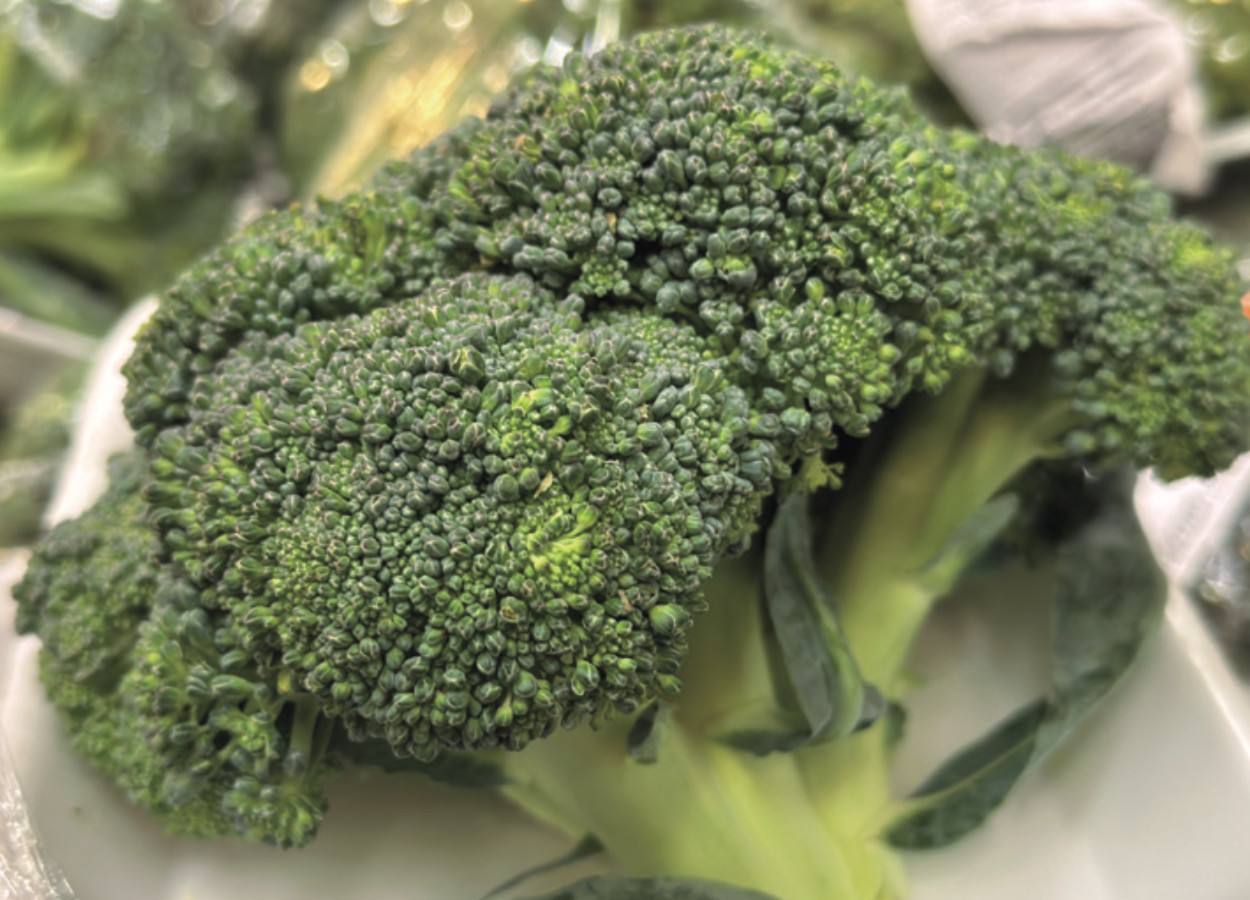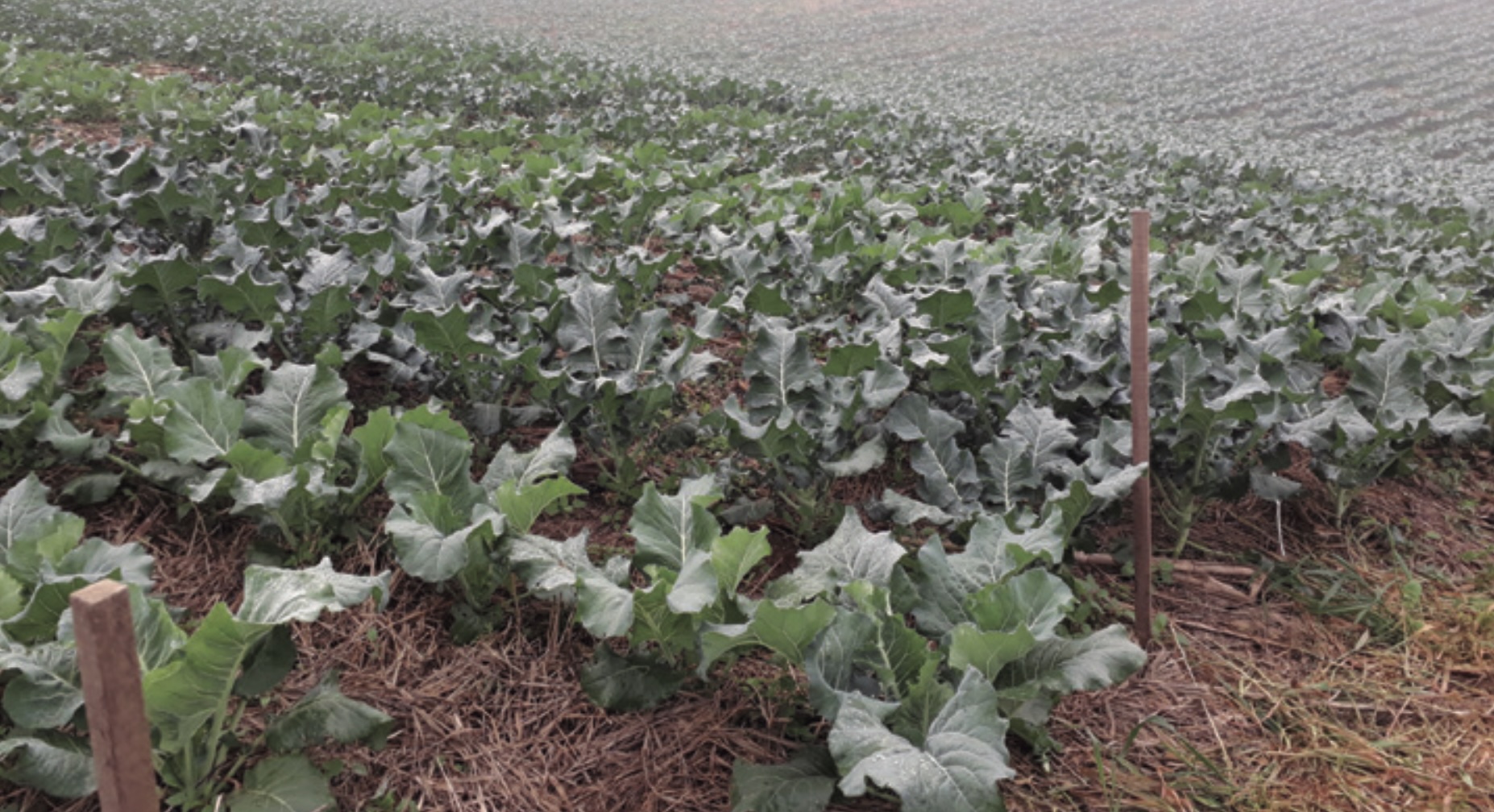The new role of the agricultural engineer in the digital age
By Laura Malàge, agricultural engineer at Sima

Broccoli, broccoli or cauliflower (brassica oleracea var. italica) are oleraceous species of the family Brassicaceae, valued for their nutritional richness and culinary versatility. Originally from Italy, they are cultivated all over the world.
In Brazil, there are two types of broccoli: branchy broccoli (with several inflorescences) and single-headed broccoli (single inflorescence).
Branchy broccoli, also known as brocollini, consists of hybrids of European broccoli (B. oleracea var. italica) with the Chinese "kai lan" (B. oleracea var. alboglabra). They are prized for their soft, edible stems. The name "branchy" is due to its ability to produce a profusion of long floral branches or peduncles.
On the other hand, single-inflorescence broccoli is characterized by a single terminal inflorescence, or head, with an enlarged diameter and finely granulated flower buds, a morphology reminiscent of cauliflower. These characteristics make the variety ideal for industrialization. They can be sold both in frozen and fresh form. This type is often referred to as American broccoli or head broccoli, an allusion to the unique harvest of its bulky, cauliflower-like head.
For most types of cultivated broccoli, optimal temperatures range, respectively, between 20°C and 24°C, and between 15°C and 18°C, before and after the emergence of the central inflorescence. Temperatures outside these parameters can negatively affect the plant, altering the size and quality of the inflorescences, reducing productivity and affecting the duration of the cultivation cycle.
Faced with climate variations, farmers adopt specific strategies for each region. In low-altitude locations, transplanting of winter cultivars occurs between April and June, while at higher altitudes, it extends from February to July. For summer cultivars, the transplanting period varies from August to February at low altitudes and from September to January at higher altitudes. It is crucial to monitor air and soil humidity, which can influence the occurrence of diseases.
Stressful conditions, such as temperatures below 10°C, water deficit and low fertility soils, can compromise productivity. Furthermore, crops planted between August and September may be more susceptible to pests and diseases due to excessive rainfall and heat, resulting in lower quality inflorescences.
Choosing a cultivar is the first critical step in growing broccoli. There are several varieties available, each adapted to different climatic conditions and seasons. (See the list of varieties registered with the Ministry of Agriculture at the end of this article)
When selecting, consider the time of year and the climatic conditions of the planting region. Some varieties thrive in cooler climates and can be planted in early spring or late summer for a fall harvest. Others are better suited to warmer climates.
Several companies offer broccoli seeds in Brazil. For example: Agristar do Brasil, Bayer, Bioagri Sementes, Horticeres Sementes, Sakata Seed, Syngenta Seeds and Topseed do Brasil. And there are more than 100 varieties of broccoli registered with the Ministry of Agriculture.
The quality of the seeds is essential in the production of broccoli seedlings. This quality is defined by four main attributes: physical purity, physiological potential, genetics and sanitary conditions. Careful evaluation of these aspects guarantees the use of seeds free of impurities and with high germination capacity, which results in vigorous and productive seedlings. Furthermore, resistance to pests and diseases is a critical factor, minimizing losses and maximizing productivity.
There are two seedling production systems: seedbeds and cell trays.
The traditional seedbed sowing system is still widely used, especially by producers with less investment capacity. However, this method is subject to significant challenges, such as vulnerability to adverse weather conditions and pest attacks.
On the other hand, the production of seedlings in cell trays has several advantages. The method optimizes the use of seeds and facilitates initial plant management, promoting more uniform and healthy development. Furthermore, it reduces the risk of root damage during transplanting and improves the efficiency of seedling transportation.
On the other hand, for many producers, especially in regions with a tradition of broccoli cultivation, purchasing seedlings from specialized nurseries is a practical alternative. This approach offers convenience and proven results in the field, allowing farmers to focus on other stages of production.

The appropriate choice of planting area, care with soil salinity and pH, as well as the correct balance of nutrients are critical factors that producers must consider to ensure a prosperous and quality harvest.
It is imperative to avoid newly disturbed areas that contain residues from previous crops, wood or decaying grass clumps. Such residues can not only delay the availability of essential nutrients, but also favor the emergence of diseases.
Broccoli requires specific pH conditions, ranging between 6,5 and 7. A pH below ideal can result in molybdenum (Mo) deficiency, while a higher value can reduce the availability of manganese (Mn) and boron (B).
Brassicas are known for extracting large amounts of nutrients from the soil. To meet your needs, it is recommended to use limestone to increase the base saturation to 80% and the magnesium (Mg) content to a minimum of 9 mmol/dm3.
As for organic fertilization, it should vary between 30 t/ha and 60 t/ha of well-tanned organic compost, with the exact amount depending on the organic matter content present in the soil.
Chemical fertilization, in turn, must be adjusted based on soil analysis. The doses of macronutrients considered adequate for most regions are:
• Phosphorus (P): from 50 kg/ha to 400 kg/ha at planting.
• Potassium (K): from 50 kg/ha to 240 kg/ha at planting; and from 50 kg/ha to 120 kg/ha in coverage.
• Nitrogen (N): from 60 kg/ha to 120 kg/ha at planting; and from 15 kg/ha to 200 kg/ha in coverage.
Nitrogen and potassium are particularly influential on broccoli productivity and disease resistance. However, it is essential to avoid excessive use of undecomposed organic matter, which can delay the availability of these nutrients.
Management practices must be adjusted based on a careful assessment of soil fertility, the growing region, the management techniques used and the variety of broccoli used. The history of use of the planting area is also a decisive factor.
In addition, it is recommended to add B, from 3 kg/ha to 4 kg/ha, together with other mineral fertilizers during planting. Foliar sprays with borax and ammonium molybdate after transplanting may be advised to promote adequate nutrition and prevent deficiencies.
The spacing between crop rows most adopted by farmers varies between 50 cm and 70 cm, while the spacing between plants can vary from 50 cm to 80 cm, allowing the planting of more than 20 thousand plants per hectare.
Choosing the ideal spacing depends on a balance between the search for greater productivity and the need to keep plants healthy. Larger spacing tends to facilitate cultural activities, such as weeding and transport of the harvest, and promote better plant development.
On the other hand, denser spacing allows the establishment of a greater number of plants per hectare, resulting in medium-sized florets, ideal for the processing industry.
Some planting innovations aim to increase efficiency and reduce common problems. The use of windrows or ridges, for example, is a practice adopted by some farmers to facilitate harvesting, control weeds and reduce the incidence of diseases.
Weeds, when not managed properly, compete directly with crops for water, light and nutrients, which can significantly compromise production.
Experts point out that the most critical period for weed control in broccoli crops occurs in the first weeks after transplanting. During this phase, it is essential that plants remain free from any competition, allowing them to firmly establish themselves and efficiently use the resources available in the environment.
Control can be physical, through manual or mechanized weeding. It is a common and effective practice, but it requires labor and can become costly. Alternatively, the use of herbicides presents itself as a practical solution for weed management.
Broccoli cultivation in Brazil faces constant challenges due to pest infestation. The main ones are aphids, whiteflies and caterpillars.
Aphids – Brevicoryne brassicae, Myzus persicae e Lipaphis erysimi – are small insects that attack broccoli crops at all stages of their cycle, forming large colonies on the underside of leaves, shoots and flowers. The continuous sucking of sap and injection of toxins by aphids results in weakening of seedlings, wilting of leaves and shoots, in addition to promoting the formation of sooty mold caused by the fungus. capnodium sp., damaging photosynthesis and, consequently, the general health of the plant.
The whitefly (bemisia tabaci), another harmful insect, causes similar damage to aphids through sap sucking and its toxicogenic action. Furthermore, in high infestations, the presence of whiteflies can lead to the formation of "white stalk" on plants, a condition that significantly depreciates the commercial value of broccoli.
Integrated pest management (IPM) is crucial to combat these threats in a sustainable way. This includes constant monitoring of insect populations using yellow sticky traps, the use of biological insecticides containing entomopathogenic fungi, such as Brevicoryne bassiana e Lecanicillium spp., and chemical control with insecticides registered for use on broccoli. Alternatively, measures such as the use of mineral oil, emulsifiable vegetable oil and neem oil-based insecticides (Azadirachta indicates) represent less aggressive options before broccoli blooms.
In turn, caterpillars, including species such as Plutella xylostella (cruciferous moth), Trichoplusia ni (false caterpillar) and Ascia monuste orseis (cabbage curuquerê), also represent a significant threat to broccoli cultivation, causing defoliation and destruction of inflorescences and seeds.
To combat these pests, it is recommended to frequently monitor crops, use sex pheromone traps to capture moths and inspect plants for eggs, caterpillars and pupae. Cultural management, including crop rotation and the adoption of phytosanitary vacuum, plays a crucial role in preventing infestations. The use of chemical and biological insecticides, as well as the release of the parasitoid Trichogramma pretiosum, are effective strategies for controlling these pests.
Broccoli production faces significant challenges due to the presence of several diseases that directly affect its productivity and quality. Among the main problems are cruciferous root rot, black rot, soft rot, black rot and alternariasis, each with its particular characteristics and control methods.
The cruciferous hernia, caused by the pathogen Plasmodiophora brassicae, is a global concern in brassica-producing areas. Characterized by the formation of galls on the roots, this disease makes it difficult to absorb water and nutrients, which can lead to the death of the plant in severe cases. Infested soil represents an ongoing challenge as the pathogen can survive for years in the form of resistance spores. Management strategies include crop rotation, use of organic compounds and adjusting soil pH to create conditions less favorable to disease development.
In turn, black rot, caused by the bacteria Xanthomonas campestris PV. campestris, can cause significant crop losses. Spread occurs mainly through infected seeds or seedlings and survival structures. There are no pesticides registered for its control,
Caused by Pectobacterium carotovorum, soft rot is notable for its bad odor and rapid maceration of plant tissues. Prevalent in summer plantings, effective control involves avoiding injuries to plants that could facilitate infection.
Pratinho disease, resulting from infection by phytoplasmas, affects the phloem of plants, leading to darkening of the vessels, reduced growth and poor inflorescence formation. Its transmission occurs through leafhoppers, with weeds serving as reservoirs of the pathogen. Prevention involves the control of leafhoppers and weeds, in addition to the production of seedlings in protected environments.
Finally, alternariasis, caused by Alternaria brassicicola e Alternaria brassicae, represents a challenge particularly in the sowing phase. Management includes the use of pesticides, incorporation of leaf debris into the soil, crop rotation and use of windbreaks to reduce the spread of the fungus.
Harvest and post-harvest care is crucial to determine the final quality of broccoli. The harvesting process is predominantly manual, a practice that, although laborious, allows greater care for the physical integrity and quality of the product. This attention is especially important considering that broccoli is often harvested at an immature or still growing stage. This characteristic generates susceptibility to rapid deterioration due to its high metabolic activity and few reserve nutrients.
Determining the exact harvest time is a challenge. Shape and compactness are vital indicators for this decision. Broccoli should be harvested at the appropriate point of development and at the coolest times of the day to minimize stress and preserve its quality. The complexity of this process is amplified by the existence of different types of broccoli, such as branchy and single-inflorescence broccoli.
For branchy broccoli, harvesting begins approximately 90 days after sowing. Successive harvests follow, which may vary according to environmental conditions.
On the other hand, single-flowered broccoli has a cycle that varies from 90 to 130 days. The harvest is done in a specific way and may include the harvest of smaller lateral inflorescences for the fresh market. The choice of cultivar is a crucial factor for the homogeneity of production, significantly influenced by the climate.
The fresh consumption market shows a clear preference for single, compact, dark green and medium-sized inflorescences. This trend is followed by processing industries, although they also use larger inflorescences for specific purposes, such as freezing.




Article published in issue 144 of the magazine Cultivar Hortaliças e Frutas.

Receive the latest agriculture news by email